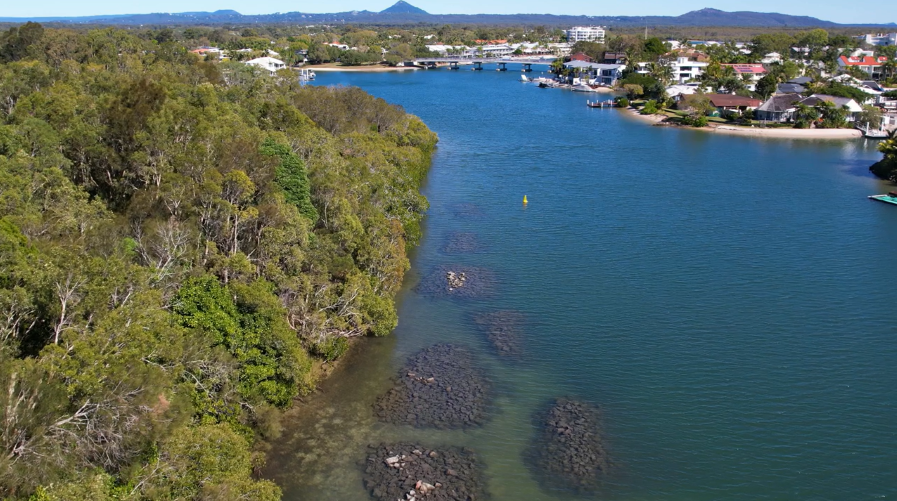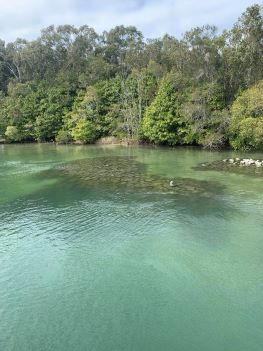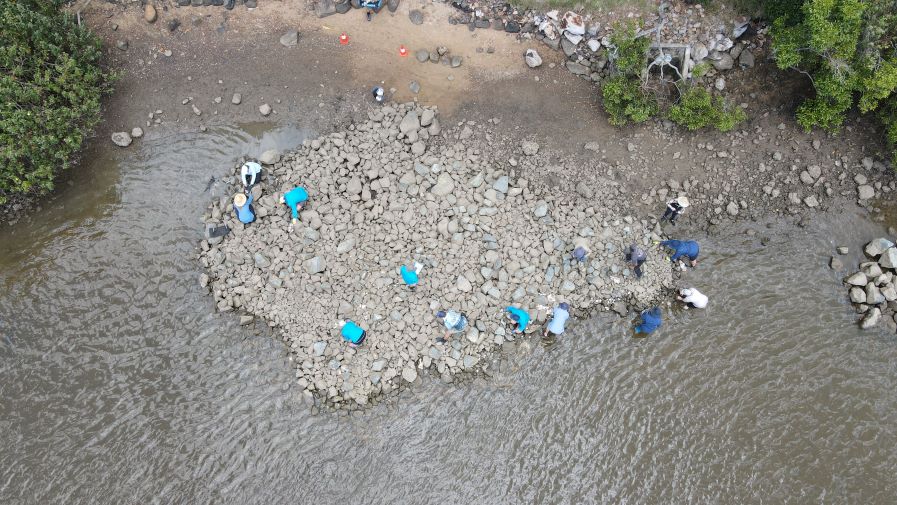Noosa’s Huon Mundy Reefs are being restored as part of the Noosa Oyster Ecosystem Restoration project, a partnership a partnership between the Nature Conservancy, Noosa Shire Council, The Thomas Foundation, and the Australian Government.

Photo courtesy of SCairns PANGA productions
The rocky foundations for oyster reef ecosystems have been laid at 4 restoration sites in the Noosa River estuary. These sites are Tewantin, Goat Island and two sites in lower Weyba Creek. Collectively, these 30 reef patches are known as the Huon Mundy Reefs. Up until the early 1900’s, oyster reefs were common throughout the Noosa River estuary. First Nations groups utilised oysters as an important protein source. Huge oyster shell middens lined the shore at Tewantin for many thousands of years. Noosa’s traditional custodians, the Kabi Nation, selected the name for the reefs as the Huon Mundy Reefs after a great Kabi spiritual leader.
The foundations for the reefs were designed to include characteristics of historic oyster reefs while fitting in with the modern environmental condition and wide range of human uses of the Noosa River today.

Photo courtesy of Kin Kin School
Bringing back Australia’s most threatened marine ecosystem, the native oyster reef, brings back a wealth of benefits for people and nature. This includes:
It’s important we leave these areas in peace to allow the oyster ecosystem community, including the surrounding riverbed to regenerate naturally. The regeneration process takes many years. The oyster ecosystems grow over time and strive to survive modern day stresses such as climate change, river sediment, flooding, disease, predation, and the raft of human influences on the river’s health and functioning.
Monitoring of the ecological and physical performance is being undertaken to measure the abundance of rock oysters, presence/absence of invertebrates and fish, recolonisation or colonisation of marine plants to and around the reefs, and changes in the condition of the shoreline adjacent to and 50 metres up and downstream of the 4 restoration areas. Click here for the full project update.
For more information please see The Nature Conservancy website.

The Nature Conservancy, Noosa Council and the Noosa Integrated Catchment Association undertaking 'oyster seeding' on the Tewantin oyster reef.
